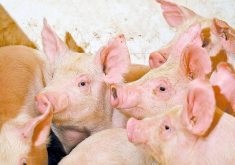Any bar-coded dangle tags still hanging from Canadian cattle’s ears will officially become plastic jewelry effective July 1.
The Canadian Food Inspection Agency, which was previously expected to de-list bar code tags as of Jan. 1, 2010, said May 28 that the bar code tags will be de-listed July 1 in favour of radio frequency identification (RFID) tags.
Starting July 1, all cattle must be tagged with approved RFID tags before they move from their current locations or leave their farms of origin.
“Although this change may be an additional one-time process for some producers, the ability to easily capture information from the RFID tags will help all producers in the long run,” said Darcy Eddleston, a Paradise Valley, Alta. producer and chairman of the Canadian Cattle Identification Agency (CCIA), in a joint CFIA/CCIA release.
Read Also

Horns aren’t unlocking anytime soon on livestock transport standards
Standards good enough meet the definition of “humane” animal transportation still vary widely between what what industry wants, what animal rights advocates want and, between the two, what federal regulators decide is good enough.
“We have worked with government to move forward on traceability and we believe that de-listing the bar-coded tag will advance traceability initiatives.”
Bar-coded dangle tags haven’t been available for purchase since 2006. But producers who still have unused dangle tags must not apply them to animals after July 1, the agencies said.
Existing bar-coded tags should be left on the ear and an RFID tag applied to the same animal.
Producers who haven’t already done so must cross-reference that new RFID tag with the existing bar-coded dangle tag in the Canadian Livestock Tracking System (CLTS) to make sure all tag data and history on a given animal is maintained. Producers needing help to cross-reference tags can call the CCIA at 1-877-909-2333.














